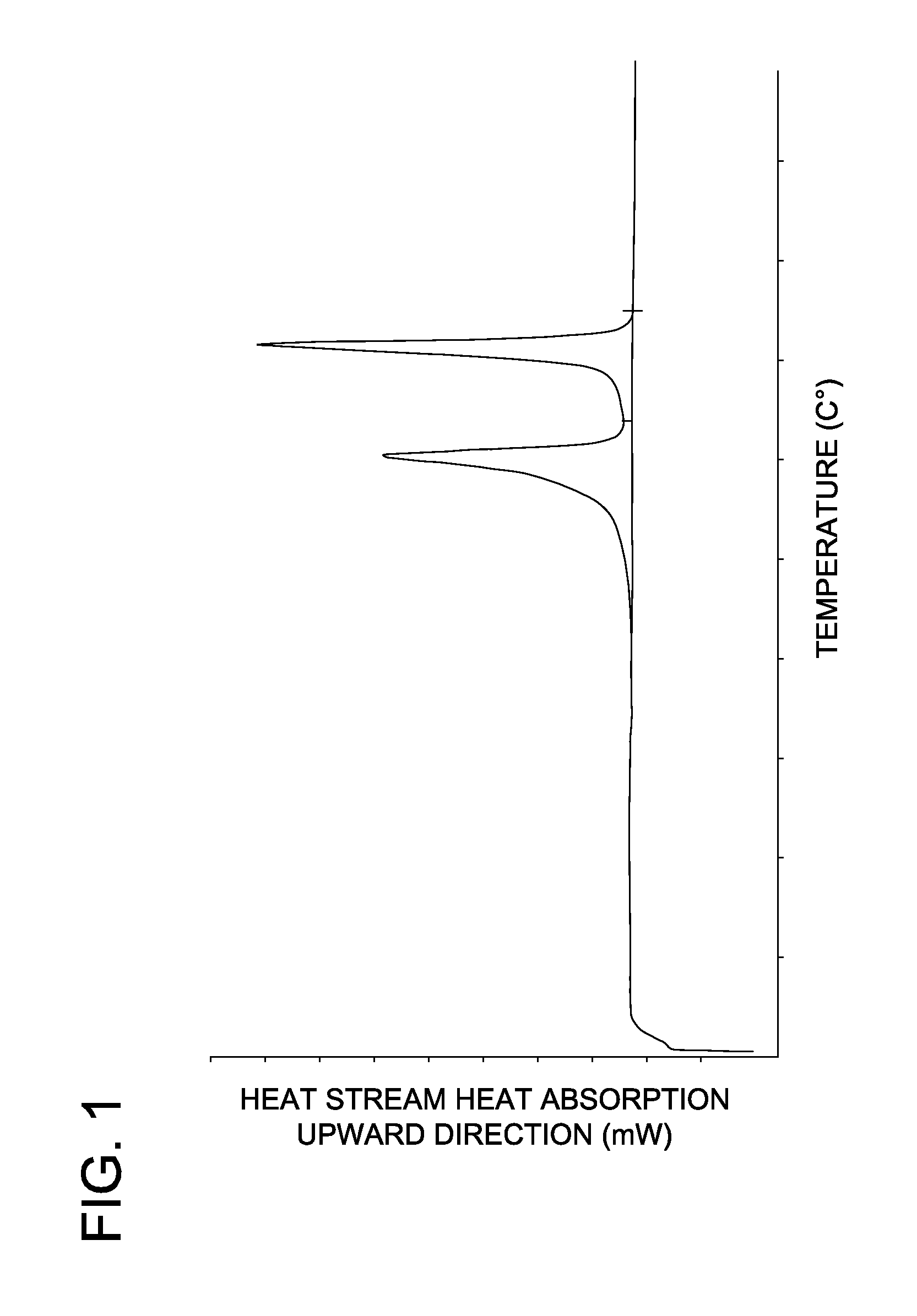Toner for developing electrostatic latent images and production method of the same
a technology of latent images and toners, applied in the field of toners for developing electrostatic latent images, can solve problems such as varied adverse effects, and achieve the effects of excellent heat resistance storage stability and low temperature fixing ability
- Summary
- Abstract
- Description
- Claims
- Application Information
AI Technical Summary
Benefits of technology
Problems solved by technology
Method used
Image
Examples
synthesis example 1
[Synthesis Example 1 of a Crystalline Polyester Resin]
[0128]Into a 5-L reaction container equipped with a stirring device, a temperature sensor, a cooling tube, and a nitrogen gas introducing device, 220 parts by mass of sebacic acid (molecular weight: 202.25) as a multivalent carboxylic acid compound and 157 parts by mass of 1,4-butanediol (molecular weight: 144.21) as a polyol compound were charged, and an inner temperature was risen to 190° C. over one hour while these compounds were being stirred, and after these compounds were confirmed to be the uniformly-stirred condition, Ti(OBu)4 as catalyst was added in an amount of 0.003 mass % to the charged amount of the multivalent carboxylic acid compound into these stirred compounds. Subsequently, while produced water was being distilled away, the inner temperature was risen from 190° C. to 240° C., further, on the condition of a temperature of 240° C., a dehydration condensation reaction were continued over 6 hours so as to conduct ...
synthesis example 2
[Synthesis Example 2 of a Crystalline Polyester Resin]
[0129]A crystalline polyester resin (hereafter, also referred to as “Crystalline polyester resin (2)”) was obtained in the same way as that in Synthesis Example 1 of the crystalline polyester resin except that 68 parts by mass of ethylene glycol (molecular weight: 62.07) was used as the multivalent carboxylic acid compound in Synthesis Example 1 of a crystalline polyester resin. For the obtained “Crystalline polyester resin (2)”, a melting point (Tm) was measured in the same technique for Synthesis Example 1 of a crystalline polyester resin, resulted in 75 64° C., and also molecular weight was measured, resulted in a number average molecular weight of 2,800 as standard styrene conversion.
[Preparation Example 1 of Dispersion Liquid of Crystalline Polyester Resin Fine Particles]
[0130]Thirty parts by mass of the crystalline polyester resin (1) was melted, and transferred in the molten state at a transfer rate of 100 parts by mass pe...
preparation example 2
[Preparation Example 2 of Water-Based Dispersion Liquid of Binder Resin Fine Particles]
[0134]Water-based dispersion liquid (hereafter, also referred to as “Binder resin particle dispersion liquid (2)”) of binder resin fine particles having a core / shell structure was prepared in the same way as that in Preparation Example 1 of water-based dispersion liquid of binder resin fine particles except that Crystalline resin particle dispersion liquid (2) was used in place of Crystalline resin particle dispersion liquid (1) in Preparation Example 1 of water-based dispersion liquid of binder resin fine particles. For the obtained Binder resin particle dispersion liquid (2), the particle size of binder resin fine particles was measured in the same way in Preparation Example 1 of water-based dispersion liquid of binder resin fine particles, which resulted in that an average particle size was 265 nm. The molecular weight of the binder resin constituting the binder resin fine particles was measure...
PUM
| Property | Measurement | Unit |
|---|---|---|
| temperature | aaaaa | aaaaa |
| glass transition point | aaaaa | aaaaa |
| melting point | aaaaa | aaaaa |
Abstract
Description
Claims
Application Information
 Login to View More
Login to View More - R&D
- Intellectual Property
- Life Sciences
- Materials
- Tech Scout
- Unparalleled Data Quality
- Higher Quality Content
- 60% Fewer Hallucinations
Browse by: Latest US Patents, China's latest patents, Technical Efficacy Thesaurus, Application Domain, Technology Topic, Popular Technical Reports.
© 2025 PatSnap. All rights reserved.Legal|Privacy policy|Modern Slavery Act Transparency Statement|Sitemap|About US| Contact US: help@patsnap.com

